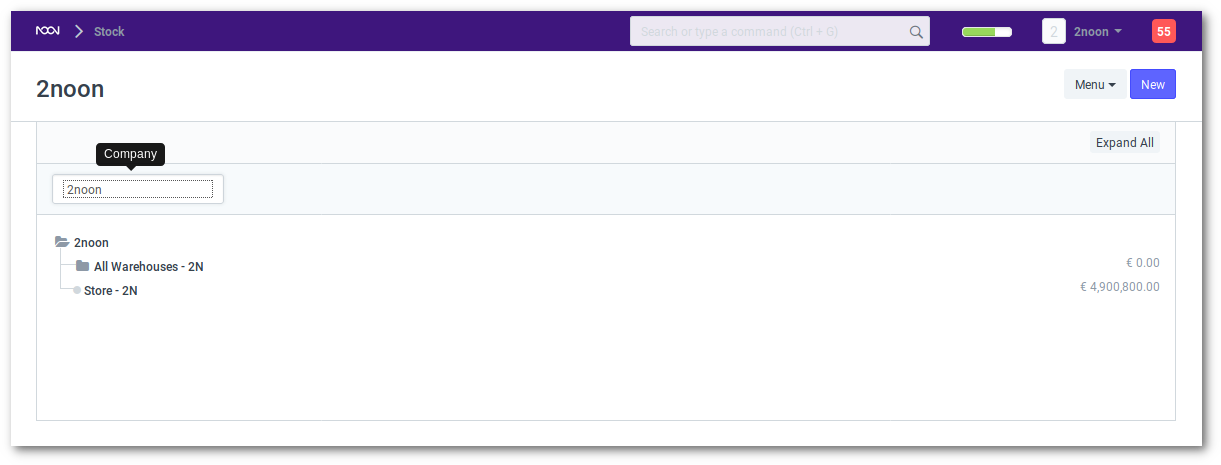Warehouse
A warehouse is a commercial building for storage of goods. Warehouses are used by manufacturers, importers, exporters, wholesalers, transport businesses, customs, etc. They are usually large plain buildings in industrial areas of cities, towns, and villages. They mostly have loading docks to load and unload goods from trucks.
The terminology of ‘Warehouse” in noonERP is a bit broader though and maybe can be regarded as “storage locations”. For example you can create a sub-Warehouse which practically is a shelf inside your actual location. This can become quite a detailed Tree like >Warehouse >Room >Row >Shelf >Box
To go to Warehouse, click on Stock and go to Warehouse under Setup. You could also switch to ‘Tree’ View or simply type warehouse tree in the awsone bar.

In noonERP, every Warehouse must belong to a specific company, to maintain company wise stock balance. In order to do so each Warehouse is linked with an Account in the Chart of Accounts (by default of the the same name as the Warehouse itself) which captures the monetary equivalent of the goods or materials stored in that specific warehouse. If you have a more detailed Warehouse Tree as the one described above most likely it’s a good idea to link the sub-locations (>room >row >Shelf, …) to the account of the actual Warehouse (the root Warehouse of that Tree) as most scenarios do not require to account for value of stock items per Shelf or Box.
Warehouses are saved with their respective company’s abbreviations. This facilitates identifying which Warehouse belongs to which company, at a glance.
You can include user restrictions for these Warehouses. In case you do not wish a particular user to operate on a particular Warehouse, you can refrain the user from accessing that Warehouse.
Note: noonERP system maintains stock balance for every distinct combination of Item and Warehouse. Thus you can get stock balance for any specific Item in a particular Warehouse on any particular date.